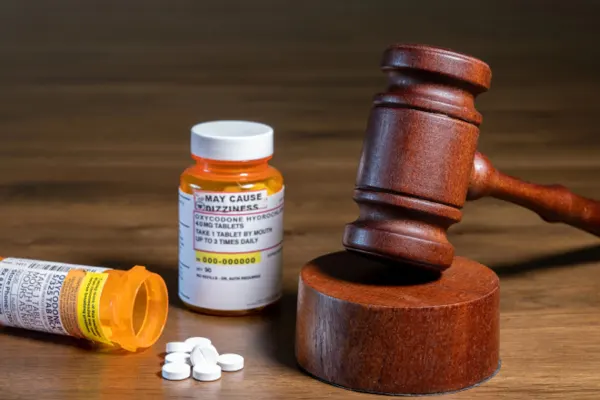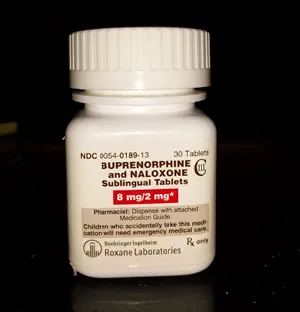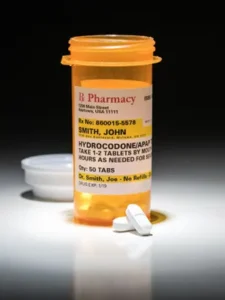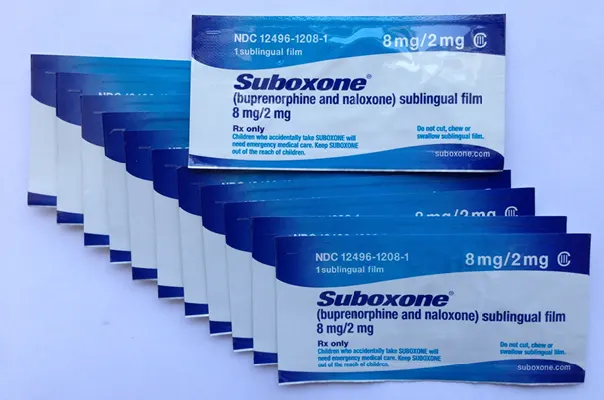Class Action Lawsuit Alleges Suboxone Causes Severe Tooth Decay

The Suboxone MDL Lawsuit involves claims that Suboxone, a medication for helping addicts manage opioid addiction, causes severe dental issues such as tooth decay, erosion, and loss due to its acidic formulation.
Plaintiffs in the case allege that the manufacturers, Indivior and Aquestive Therapeutics, did not adequately warn users and healthcare providers about these risks.
The lawsuits are part of a class-action and multidistrict litigation (MDL) with hundreds of cases filed. The litigation focuses on the failure to warn about dental risks and the design defects of Suboxone.
Current cases are consolidated in an MDL in the Northern District of Ohio. As of November 1, 2024, there were 678 pending cases in the Ohio MDL.
What Are Plaintiffs Saying is Wrong with Suboxone
The court description of the Suboxone MDL explains the issue this way:
“These actions share complex factual questions arising from the alleged propensity of Suboxone film, which is used for the treatment of opiate addiction, to cause dental erosion and decay. Plaintiffs in all actions allege that defendants designed Suboxone film to be acidic, which they claim leads to dental erosion and decay when the film is dissolved in the mouth (Suboxone previously was available only as an ingestible tablet). Plaintiffs allege that the defendants knew, but failed to warn, that Suboxone film causes damage to teeth. The same factual questions regarding general causation, including the mechanism of the alleged injury, are present in all cases. Similarly common are questions surrounding the adequacy of the testing defendants conducted regarding Suboxone film and the sufficiency of warnings regarding dental problems.”
Source: https://www.ohnd.uscourts.gov/mdl-3092

In January 2022, the FDA issued a warning about the dental risks associated with buprenorphine medications like Suboxone, leading to a label update in June 2022 to include warnings about potential dental issues.
Many patients have reported severe dental problems, including tooth decay, cavities, and tooth loss, after using Suboxone, often requiring extensive dental work such as extractions and implants.
The lawsuits seek compensation for dental damages, with potential settlement amounts varying based on the severity of the dental issues and the duration of Suboxone use. The litigation is ongoing, and no settlements have been finalized yet.
Understanding Suboxone: Uses, Benefits, and Legal Challenges
What is Suboxone?
Suboxone emerged as a pivotal medication in the fight against opioid addiction, providing a beacon of hope for many individuals seeking to overcome dependency.

Suboxone is a prescription medication used primarily to treat opioid addiction. It combines two active ingredients: buprenorphine and naloxone.
Buprenorphine is a partial opioid agonist, meaning it activates the same receptors in the brain as opioids but to a lesser degree, reducing withdrawal symptoms and cravings.
Naloxone is an opioid antagonist that blocks the effects of opioids, preventing misuse.
Suboxone comes in a tablet form or strip form – but both must be dissolved in the mouth, and both can lead to tooth decay.
Benefits of Suboxone for Opioid Addiction Treatment
Suboxone has been instrumental in helping individuals manage opioid addiction.
Here are some of its key benefits:
- Effectiveness: Suboxone effectively reduces withdrawal symptoms and cravings, making it easier for individuals to abstain from opioid use.
- Safety Profile: Compared to full opioid agonists like methadone, Suboxone has a lower risk of overdose due to its ceiling effect, where increasing doses do not produce increased effects after a certain point.
- Accessibility: Suboxone can be prescribed in an outpatient setting, providing more convenience and accessibility for patients compared to treatments that require frequent clinic visits.
- Stability: By stabilizing patients’ conditions, Suboxone allows them to focus on recovery and rebuilding their lives without the constant distraction of withdrawal symptoms.
A Brief History of Suboxone
Suboxone’s history is rooted in the development of treatments for opioid addiction. It was approved by the U.S. Food and Drug Administration (FDA) in 2002 as a combination of buprenorphine and naloxone.

Buprenorphine, a partial opioid agonist, was initially developed in the 1960s and gained attention for its potential in treating opioid dependence due to its ability to reduce withdrawal symptoms and cravings without producing the full euphoric effects of opioids.
The addition of naloxone, an opioid antagonist, was designed to deter misuse.
If Suboxone is taken as prescribed (sublingually), naloxone has minimal effect. However, if the medication is injected, naloxone can precipitate withdrawal symptoms, discouraging abuse.
Suboxone became a significant advancement in addiction treatment because it could be prescribed in an outpatient setting, unlike methadone, which requires administration in specialized clinics. This increased accessibility and convenience for patients seeking recovery.
Over the years, Suboxone has played a crucial role in medication-assisted treatment (MAT) for opioid addiction, helping many individuals manage their addiction and work towards recovery.
However, it has also faced challenges, including legal issues related to its side effects, particularly dental problems, which have led to ongoing litigation.
Despite these challenges, Suboxone remains a key component in the toolkit for treating opioid addiction.
Not The First Time Makers of Suboxone Have Been in Trouble

From the Department of Justice (DOJ) Website:
Indivior Solutions today pleaded guilty to a one-count felony information and, together with its parent companies Indivior Inc. and Indivior plc, agreed to pay a total of $600 million to resolve criminal and civil liability associated with the marketing of the opioid-addiction-treatment drug Suboxone.

Together with a $1.4 billion resolution with Indivior’s former parent, Reckitt Benckiser Group PLC (RB Group), announced in 2019, and a plea agreement with Indivior plc’s former CEO, Shaun Thaxter, announced last month, the total resolution relating to the marketing of Suboxone is more than $2 billion — the largest-ever resolution in a case brought by the Department of Justice involving an opioid drug.
In addition to its financial aspects, the agreement with Indivior Inc. includes novel provisions that:
- Require Indivior Inc. to disband its Suboxone sales force and not reinstate it;
- Require Indivior Inc.’s CEO to personally certify, under penalty of perjury, on an annual basis that during the prior year (a) Indivior was in compliance with the Food Drug and Cosmetic Act and did not commit health care fraud or (b) list all non-compliant activity and the steps taken by Indivior to remedy these acts.
- Prohibit Indivior Inc. from using data obtained from surveys of healthcare providers for marketing, sales, and promotional purposes.
- Require Indivior Inc. to remove health care providers from their promotional programs who are at a high risk of inappropriate prescribing; and
- Make Indivior subject to contempt sanctions by the court and reinstatement of the dismissed charges if it violates the agreement.
Source: https://www.justice.gov/opa/pr/indivior-solutions-pleads-guilty-felony-charge-and-indivior-entities-agree-pay-600-million
That’s right – Indivior Inc. was required to get rid of its entire sales team and never hire them back and pay over $2 Billion to resolve its wrongdoing. Not only that but their CEO was criminally charged for his role.
Legal Issues and Lawsuits Surrounding Suboxone
Despite its benefits, Suboxone has recently been at the center of legal controversies due to its potential side effects, particularly dental issues. Hundreds of lawsuits have been filed against the manufacturers, Indivior and Aquestive Therapeutics, claiming that Suboxone causes severe dental problems such as tooth decay, erosion, and loss.

The Suboxone Class Action Lawsuit and MDL
The Suboxone multidistrict litigation (MDL) involves hundreds of lawsuits consolidated in the Northern District of Ohio, focusing on claims that Suboxone causes severe dental issues like tooth decay and erosion.
Claims in the Lawsuits
The lawsuits allege that the manufacturers failed to adequately warn users and healthcare providers about the dental risks associated with Suboxone.
The acidic nature of the sublingual film is said to weaken tooth enamel, leading to significant dental damage.
Plaintiffs claim that had they been informed of these risks; they might have chosen alternative treatments.

Manufacturers’ Response and Legal Proceedings
In response to growing concerns, the FDA issued a warning in January 2022 about the dental risks of buprenorphine medications, leading to a label update in June 2022.
The manufacturers have faced criticism for not addressing these issues sooner. The lawsuits are currently part of a class-action and multidistrict litigation (MDL) process, with cases consolidated in the Northern District of Ohio.
How Long Until the Suboxone MDL Lawsuits Settle
If you follow our blog at all then you know that “settlement does not equal payment.” A lawsuit, MDL, or class action lawsuit could settle at any moment, but the truth is, it is probably going to be more than a year before a settlement agreement is close in the Suboxone MDL.
As of November 2024, no Bellwether Trials have been chosen or scheduled in the Suboxone MDL. What we generally see is that after three or four Bellwether Trials are concluded, both parties usually come to the table and start hammering out a settlement.
But at this point, Bellwether Trials are not even being planned or scheduled, so it could be years before the Suboxone Class Action Lawsuit reaches a settlement agreement.
But again, that being said, any lawsuit can be settled at any moment. So, check back periodically to keep up to date.
Conclusion Suboxone Class Action Lawsuit Update

Suboxone continues to be a valuable tool in treating opioid addiction, offering hope and stability to those in recovery.
Unfortunately, one of the popular applications (under the tongue strip) may cause tooth decay. Plaintiffs in the Suboxone MDL Lawsuit claim that the makers of Suboxone were aware of the potential damage to their teeth that using Suboxone could cause and did not properly warn users.
As of November 2024, there are nearly 680 plaintiffs in the Suboxone MDL
It seems unlikely this case will reach a settlement any time soon. Bellwether Trials have not been chosen or scheduled as of November 2024. Once Bellwether Trials have been chosen and have run their course (which can easily take over a year), that is “generally” when you can start to look forward to some sort of settlement.
Suboxone Class Action Lawsuit Update FAQ
- What is Suboxone?
Suboxone is a prescription medication used to treat opioid addiction. It contains two active ingredients: buprenorphine, a partial opioid agonist, and naloxone, an opioid antagonist. Together, they help manage withdrawal symptoms and reduce cravings. - How does Suboxone work?
Buprenorphine in Suboxone partially activates opioid receptors in the brain, alleviating withdrawal symptoms and cravings without producing the full effects of opioids. Naloxone helps prevent misuse by blocking opioid effects if the medication is injected. - What are the benefits of using Suboxone for opioid addiction?
Suboxone effectively reduces withdrawal symptoms and cravings, has a lower risk of overdose due to its ceiling effect, and can be prescribed in outpatient settings, making it accessible and convenient for many patients. - What are the potential side effects of Suboxone?
Common side effects include nausea, headache, sweating, constipation, and insomnia. More serious side effects can include respiratory depression and severe allergic reactions. Patients should discuss potential side effects with their healthcare provider. - What legal issues are associated with Suboxone?
There are ongoing lawsuits alleging that Suboxone causes severe dental issues, such as tooth decay and erosion, and that manufacturers failed to adequately warn users about these risks. These cases are part of a class-action and multidistrict litigation process. - Who can use Suboxone?
Suboxone is prescribed for individuals with opioid addiction. Suitability is determined by a healthcare provider based on the patient’s specific needs and health condition. - How is Suboxone administered?
Suboxone can be administered several ways, but a sublingual film is one of the more popular methods (and is at the center of the lawsuits), or a tablet that dissolves under the tongue. This method helps ensure the medication is absorbed effectively into the bloodstream. - Are there any precautions or warnings associated with Suboxone use?
Patients should inform their healthcare provider about any other medications they are taking and any health conditions they have. It’s important to follow the prescribed dosage and not mix Suboxone with alcohol or other sedatives, as this can increase the risk of serious side effects. - What should patients be aware of when starting Suboxone?
Patients should be informed about the potential risks, including dental issues, and discuss all treatment options with their healthcare provider. Informed consent is crucial to ensure patients are aware of both the benefits and risks involved in their treatment plan. - Can Suboxone be used long-term?
The length of Suboxone treatment varies depending on individual needs and progress. Some patients may use it short-term to manage withdrawal, while others may benefit from longer-term maintenance therapy under medical supervision.
About the Authors
Balanced Bridge Funding offers legal funding solutions for plaintiffs, plaintiff attorneys, attorneys, and law firms.
At times, a settlement can be reached in a case, but various delays can hold up the distribution of contingency fees for plaintiff attorneys and/or the settlement awards for plaintiffs.
In those situations, Balanced Bridge provides advances to advances to attorneys and advances to plaintiffs on the pending fees or awards.
To talk to one of our legal funding specialists about getting help managing your law firm cash flow, please call (267) 457-4540 or email info@balancedbridge.com. To apply online, simply click here and fill out our quick application form.
.
.
.
.
.
.
.
.
Image Credits:
Indivor logo – By Indivior – 2017 Annual Report, Public Domain, https://en.wikipedia.org/w/index.php?curid=58765445
Stack of suboxone sublingual film – By Jr de Barbosa – Own work, CC BY-SA 3.0, https://commons.wikimedia.org/w/index.php?curid=33274370
Suboxone pill bottle – By Tmeers91 – Own work, CC BY-SA 3.0, https://commons.wikimedia.org/w/index.php?curid=46998018
Suboxone sublingual pills – By Supertheman – Own work, CC BY-SA 3.0, https://commons.wikimedia.org/w/index.php?curid=10042687
Suboxone sublingual strip – By Sintegral – Own work, CC BY-SA 4.0, https://commons.wikimedia.org/w/index.php?curid=105154295


